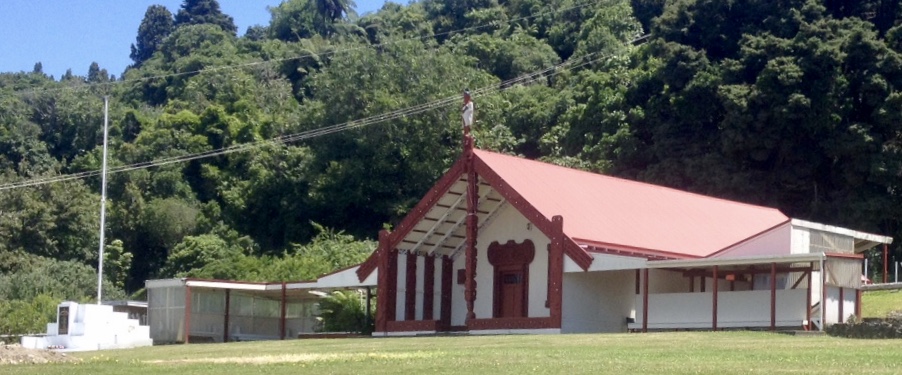
Last week’s TRM blog with a photo of the crosses on the hill at Pekapeka – asking if they made it the oldest burial ground in NZ – generated so much criticism, comment, confusion, abuse, etc., and requests for more background explanation. Objectors have claimed it was “disrespectful” to Maori. They claimed TRM is not allowed to take photos of anything Maori, or show them on Facebook, without their permission. As there were far too many responses to reply to each, this blog is to reply to everyone. It is a biggie so make a strong cup of tea first!
The subject photo on Peka Peka, for which we were criticised, was taken in January 2018 when we were researching historic information about the Tongariro Power Scheme amongst other matters. For many years we have taken photos of anything historic or interesting for our photo library. We have over 10,000 photos so that single photo was not taken for anything specific. There was no planned disrespect or intention to upset anyone.
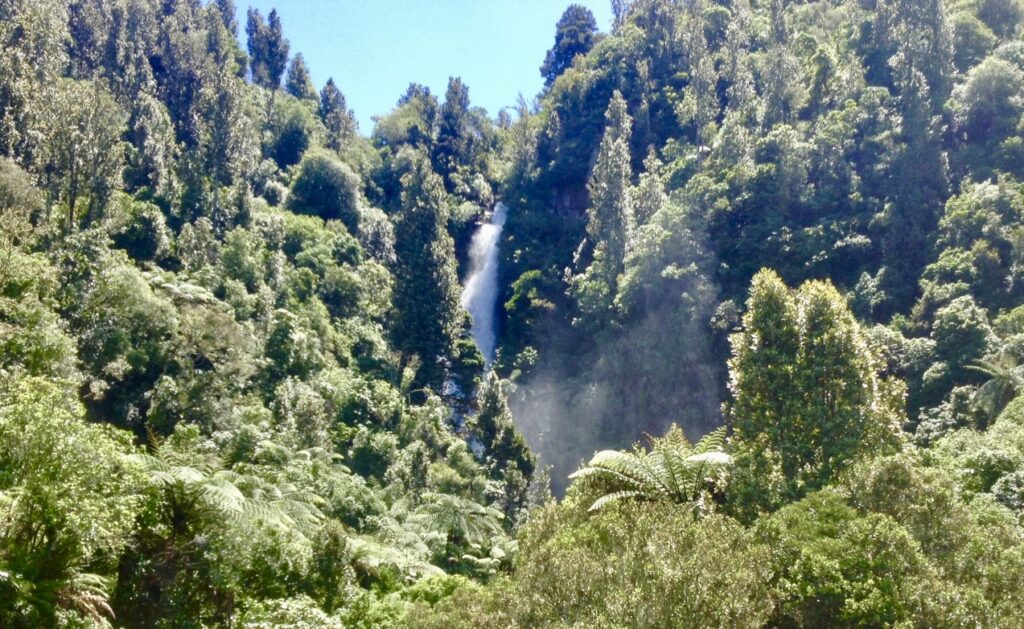
It happened when a local Maori friend offered to escort us up there and explained the background. She explained the crosses were not located in the private cemetery but on a lower-level shelf formed by the MOW (Ministry of Works) for a mass burial of human remains found during excavations for the Tokaanu Power Station tail-race. Previously we did not know of the location or existence of the crosses. She also escorted us to her old village of Waihi to show where she grew up and – with her permission – we also took photos of the waterfall, church, meeting house, foreshore etc. The other photos below, taken on the same day, confirm it was not focused only on Peka Peka. But now we are doomed!
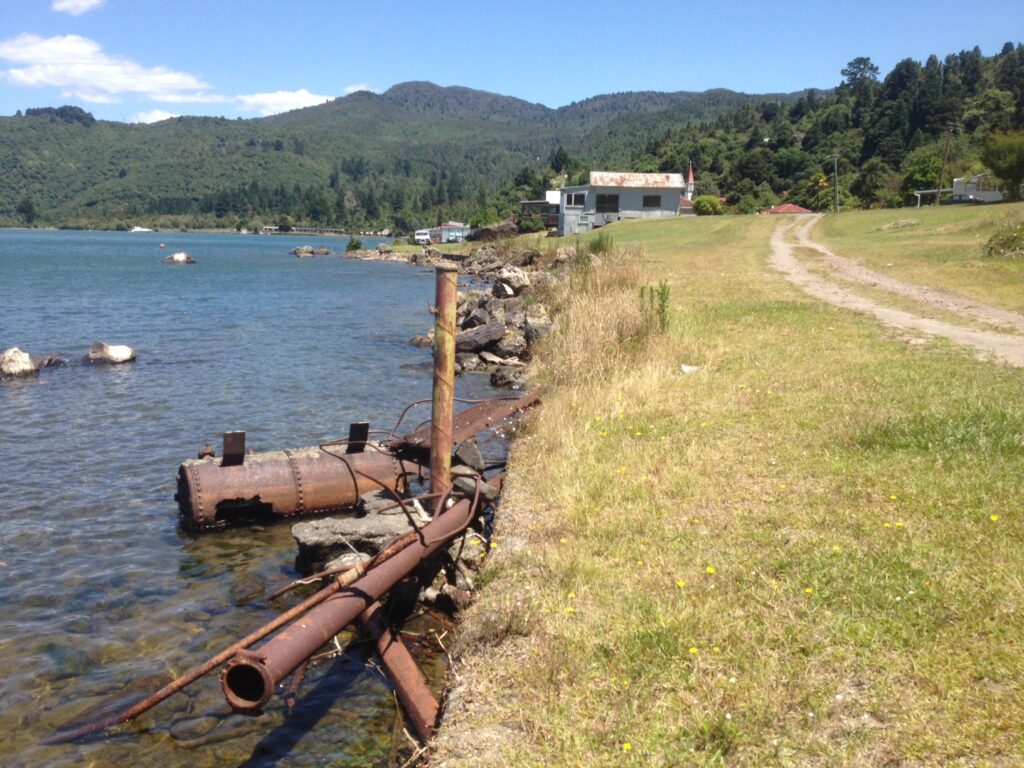
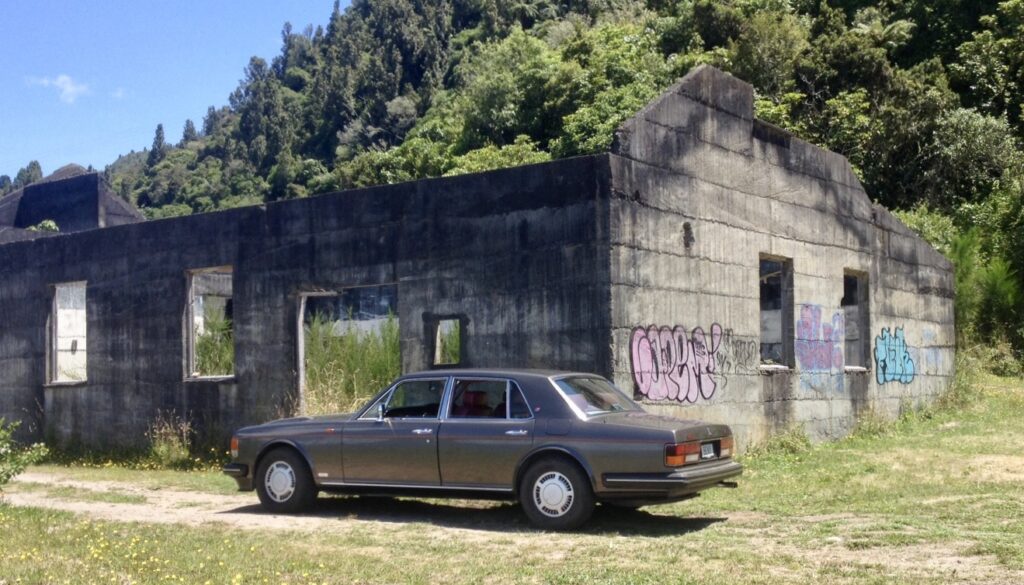
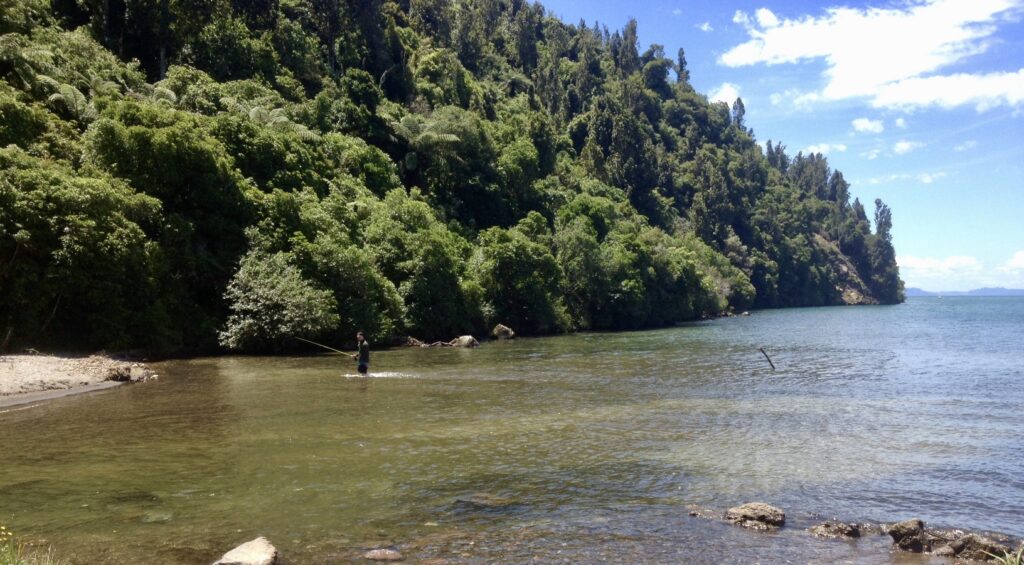
The book, Tongariro Skulduggery, which included brief historic background for the “mockumentary” about Turangi, was not part of any planned deliberate scheme to disrespect local Maori. The mockumentary, was published over two years later – in 2020. So the photo of the crosses and the book material were linked by chance, not by design. The history of the original settlers was included to add substance for readers to connect with, as part of the fictitious plot.
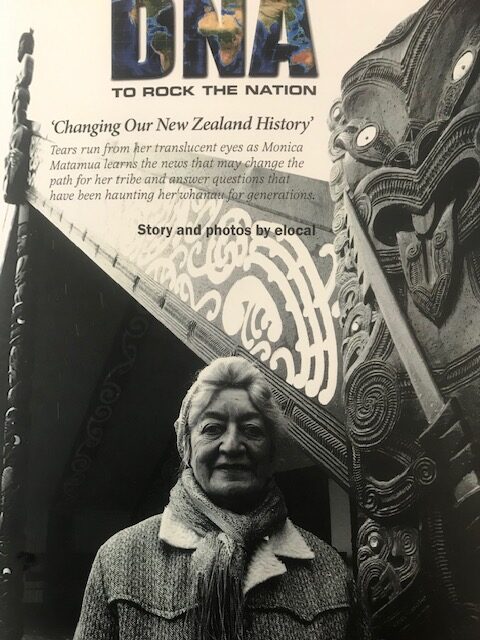
There were many other historic events and accounts and books that were also referred to. i.e. Just one example: While we were researching the history of Turangi we received a booklet in the post – see photo above. I was very grateful but we still do not know who sent it (so I cannot supply their name).
A TRM guest kindly donated the original book –(Thanks Chris) – signed by the author, Trevor Hosking. “A Museum Underfoot” which together with “DNA – to rock the nation” provided some of the inspiration for the basic concept of the fictitious plot. Guests’ enthusiastic feedback confirms it is a wonderfully entertaining story. A problem is that none of the critics who have criticised it so vehemently have read it, so many of their claims are simply wrong. What a surprise. They must imagine the plot is real. This blog is to try to persuade them there may be more to the story than they imagine!
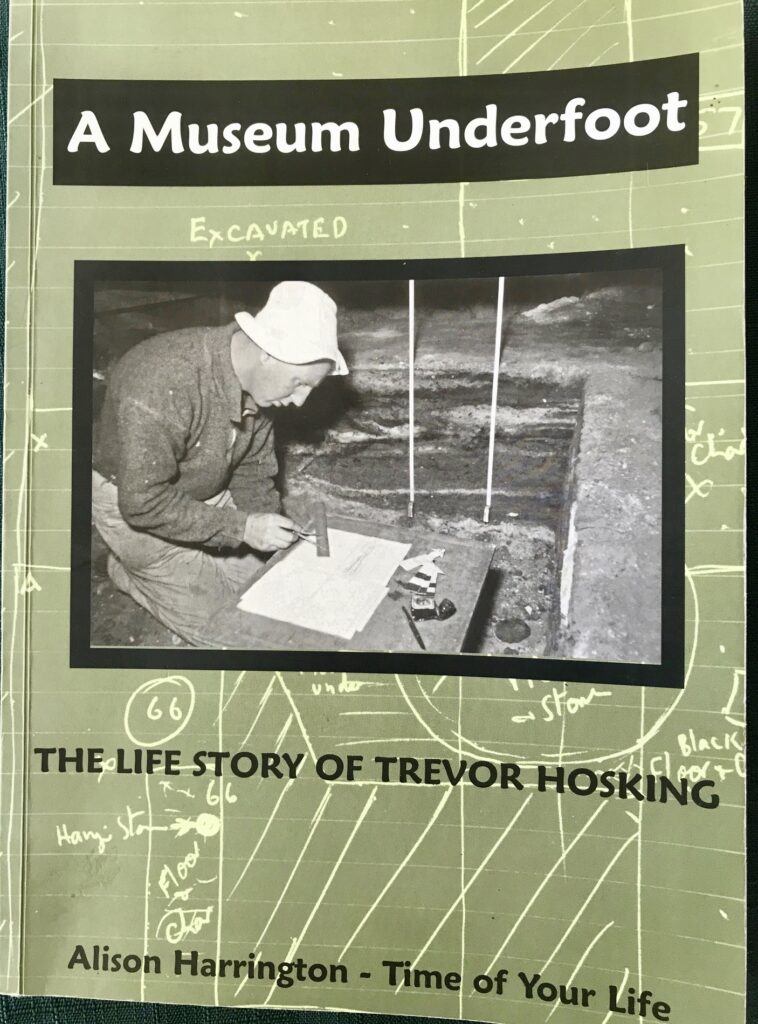
The following reference material is directly quoted from the book “A Museum Underfoot” – the life story of Trevor Hosking by Alison Harrington. He was the official MOW appointed archaeologist involved with the Tongariro Power Development scheme. The Tuwharetoa hierarchy were in touch with him all the time discussing the finds and asking about places to look. Copies of his MOW monthly reports were sent to Tuwharetoa Trust Board as well as the NZ Historic Places Trust. All investigations were open and transparent.
The fascinating book which chronicled his discoveries was published by “Friends of the Lake Taupo Museum and Art Gallery” in 2007, based on a series of recorded interviews with Trevor Hosking, who also provided more written material during 2006. (from page 107, Chapter 8 headed The Tongariro Power Development 1966)
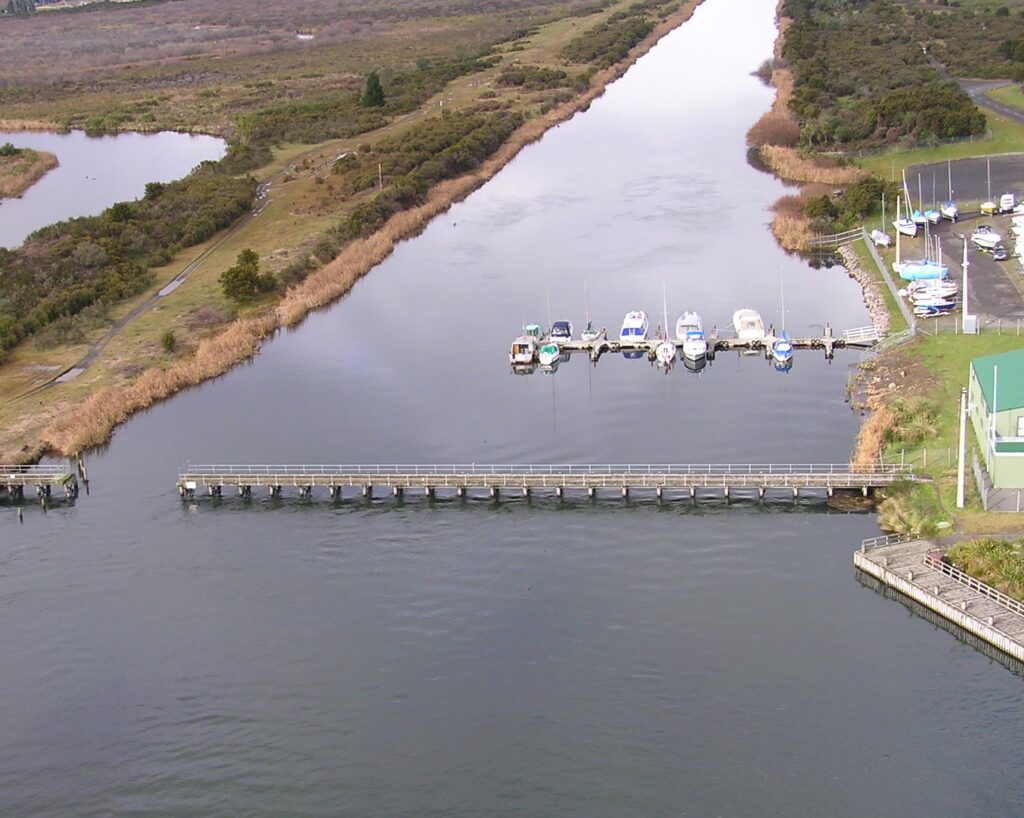
“The site of the Waiariki Cemetery was excavated down to some very early stonework, obsidian flakes, and an ancient burial ground. The skulls I found at the deepest level were very different. (i.e. from others excavated nearby near the surface of where the Power Station tail race was developed) The ridges above the eyebrows were prominent and the skulls themselves were elongated rather than round. The oldest burials were aligned towards the west, so the path of the setting sun would take the spirits home. The oldest burial ground was abandoned and had become the site of a village. The remains of a second village above the first were excavated and the final layer was the Waiariki Cemetery. The later burials were lying stretched out with the feet pointing towards the east. Perhaps this was because of the influence of Christianity, the rising sun of the new teachings.
There was practically no evidence of European contact during the time of the Waiariki Cemetery. Two European items were found with Manihera however, a slate pencil and a white porcelain button of the type used on men’s shirt sleeves…
The MOW dug a long communal grave on the hill at Peka Peka. It was across the road from Maunganamu, a small volcanic cone near the Tokaanu Power Station. There were a lot of meetings and a great deal of talk before the site was approved by the elders and the remains found their final resting place.”
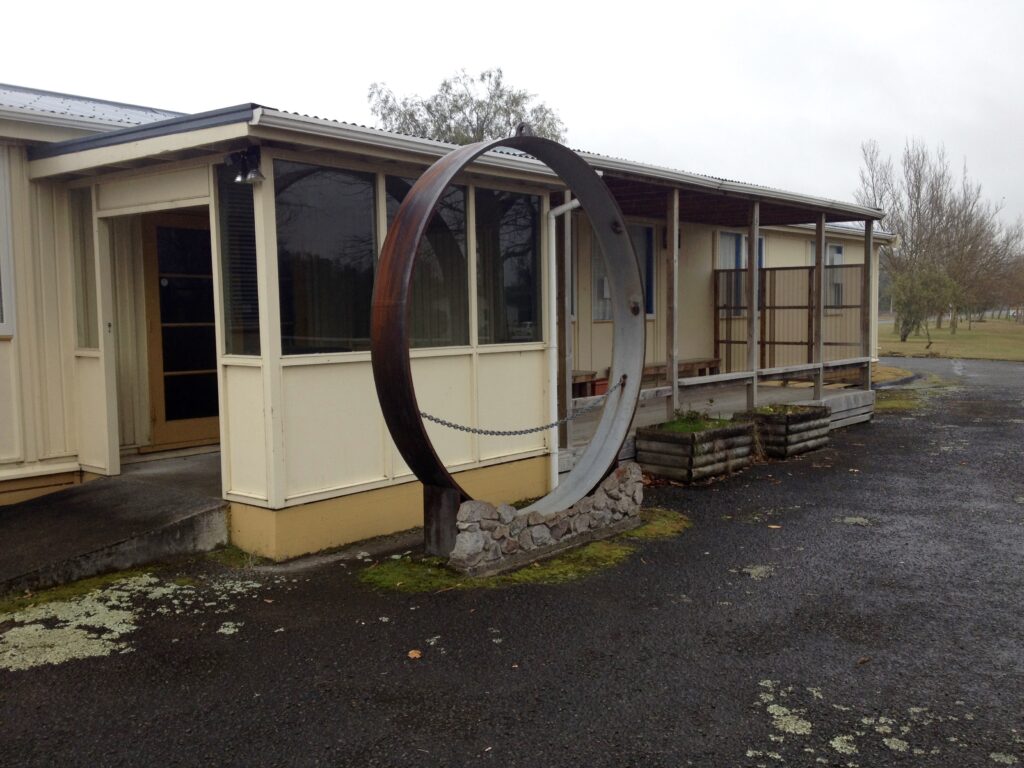
Trevor Hosking also became very involved with the MOW developing the Turangi Museum on SH41 (photo above) as part of the original visitor centre. The many artefacts from the pre-Maori settlements were seen by over 250,000 visitors (including me!) before the Museum was closed. The book also features photos of the displays from the Turangi Museum.
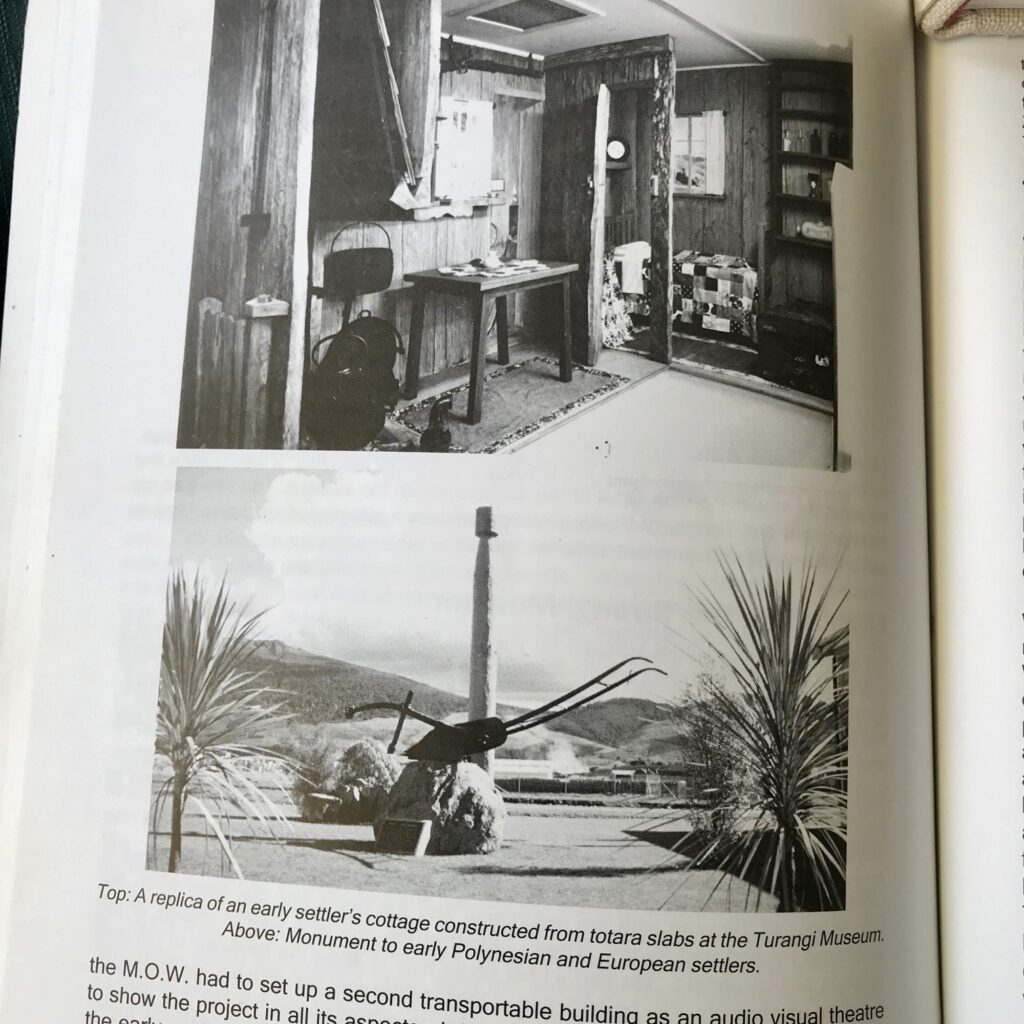
Compare the photo below taken about 50 years later…
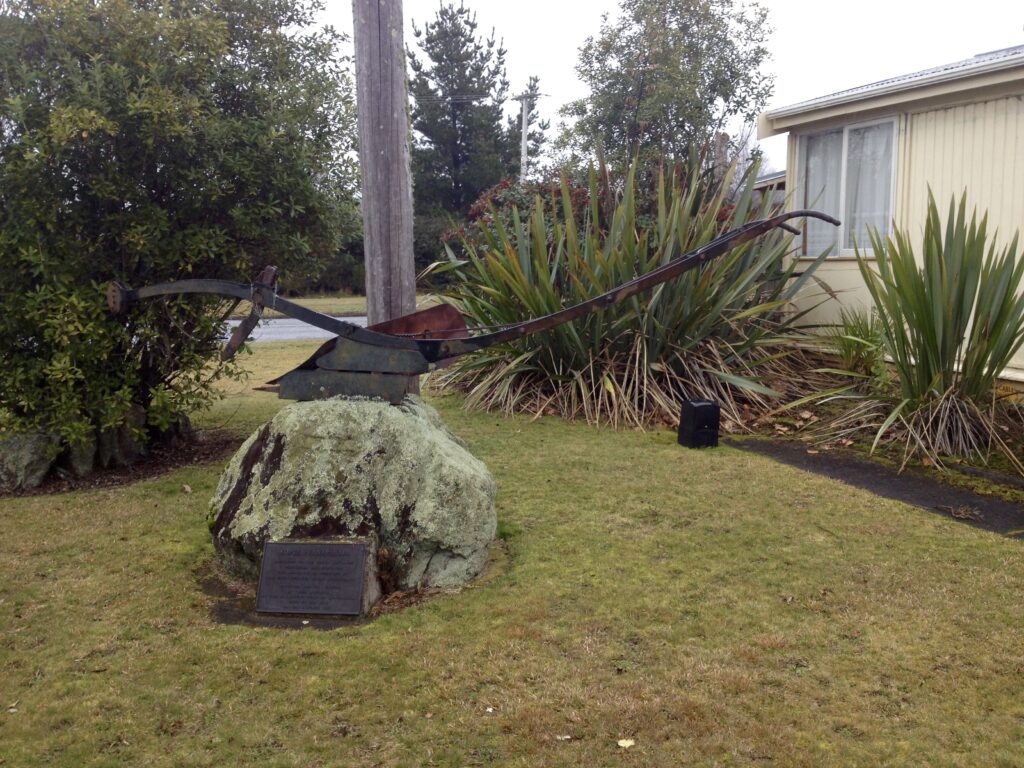
TRM has been encouraging the council to reopen the Turangi museum for about 15 years. All the pre-Maori artefacts and exhibits have since disappeared. In particular, these included a very valuable adze that was discovered in the Tongariro River by Raymond Parker. The adze was 18 inches (40 cm) long and Trevor Hosking estimated it was thousands of years old, perhaps from Moa hunter times. The Historic Places Trust rewarded Raymond with a five shilling centennial crown for handing it in. Wow! The adze was considered so valuable that the Dominion Museum made a replica for display purposes. Also of interest, the adze was made from stone only found in Nelson in the South Island which would suggest they may have been trading – greenstone for kumara? – long before the Maori arrived. He mentions in his book that the original is in Te Papa Museum in Wellington and the replica is now locked up in the Turangi museum (?) in the hope that the Tuwharetoa Trust Board will be the first New Zealand tribe to own and run a museum. What a good idea!
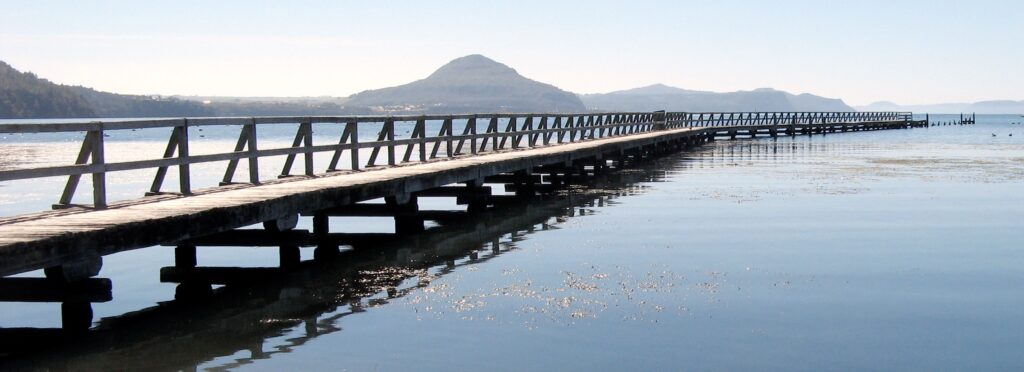
TRM are trying to be as open and transparent as Trevor Hosking was in his book, but other requests for more information have to be declined . These include naming the four “editors” who checked our draft, the name of the lady who kindly offered to show us around Tokaanu to explain the history, etc. Sorry, but over several years we discussed local history with many others who will also remain anonymous. We repeat the real problem is that none of the critics have bothered to read the book before leaping to conclusions, so much of their confusion and criticism is half-cocked and ridiculous in imagining it was aimed as a deliberate abuse of Maori culture. The mockumentary story includes considerable other local Turangi and Tongariro River history involving many other local people and anglers and tourists who have all embraced the plot as fiction. Sadly some critics have still not been able to decipher the difference between fact and fiction.
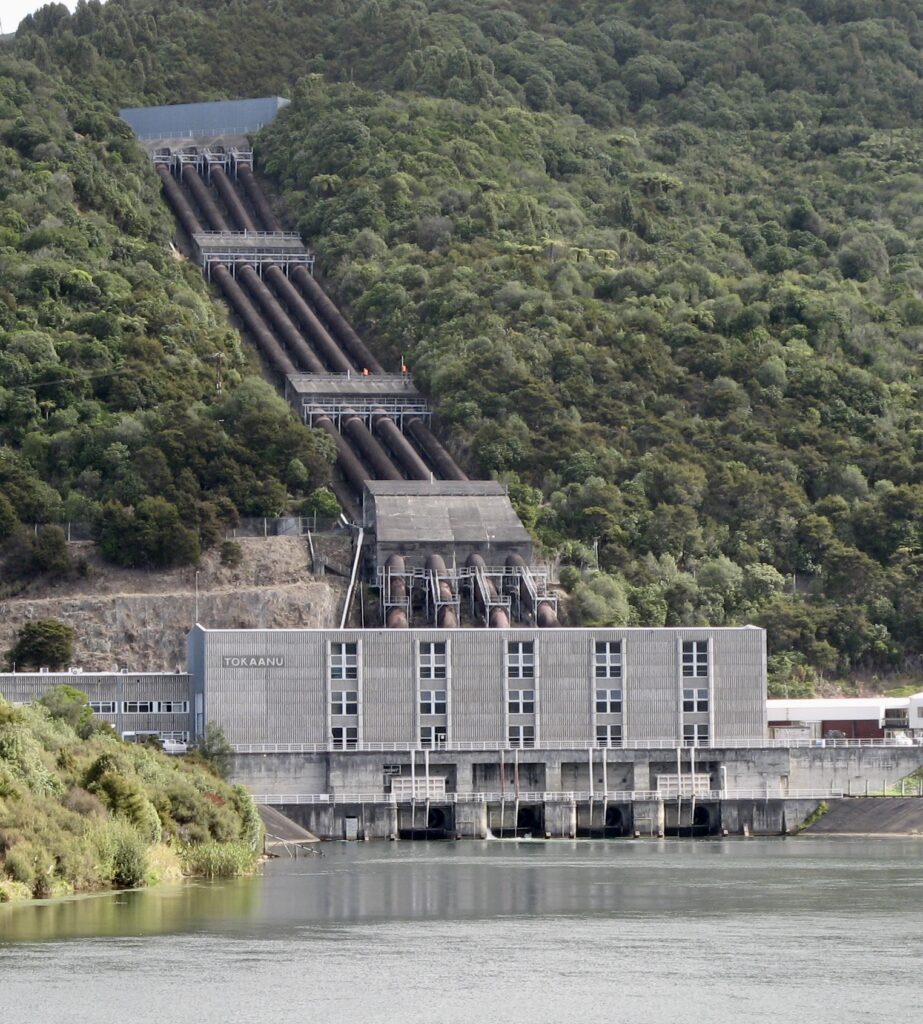
Coincidentally, as a barometer of cultural sensitivity, last Wednesday TRM’s Facebook post featured sacred grounds and a cemetery in the far north which was the scene of a bloody battle, that was never previously talked about. Now the people of Ngāwhā are finally able to piece together everything and learn their own history, instead of hiding it.
I waited and waited for any negative response… None! OK? So I have to wonder if the complaints received about TRM’s photo of Peka Peka were genuine or just some local bored hot-heads letting off steam…
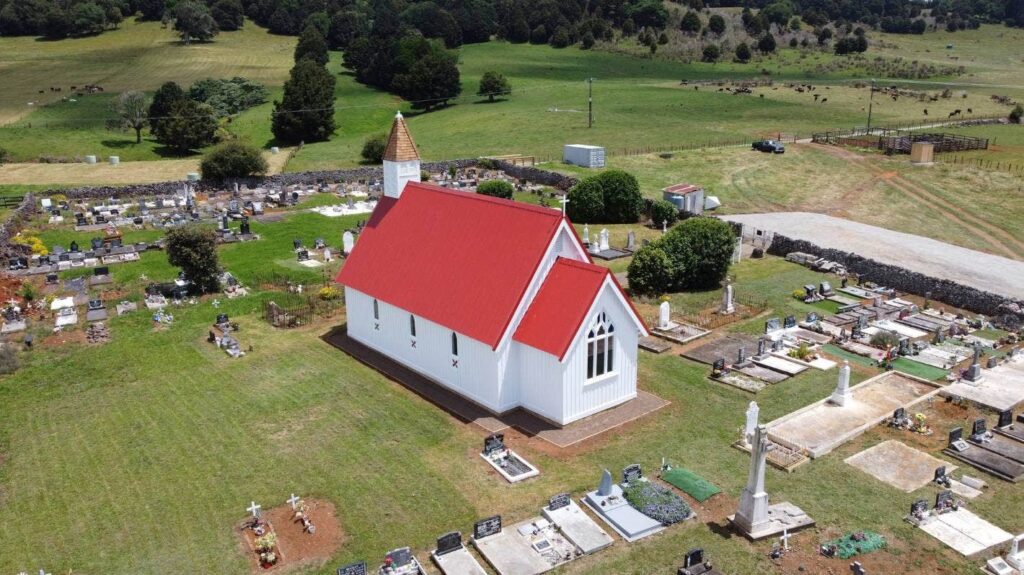
A Far North battle site – one of the key sites of the Northern War – has been rejuvenated so Kiwis can learn about the battle and what happened after.
The 1845 Battle of Ōhaeawai will now be remembered through three interconnected sites in Ngāwhā. They are part of Te Haara farm where the battle was fought, St Michael’s Anglican Church and Ōhaeawai Native School.
Te Pakanga o Ōhaeawai Memorialisation will be officially celebrated on October 16.
The Ōhaeawai Community Cultural Centre received a $1.7 million grant from the Provincial Growth Fund for the project.
Project co-ordinator Raima Redden grew up in the area and went to what was then called Ōhaeawai Māori School, but said the battle was never talked about.
“We walked on the farm every weekend picking mushrooms, but never in my wildest dreams would I have imagined that it was a battle site … Now as the adults of Ngāwhā we are finally able to piece together everything and learn our own history.”
The battle saw British Colonel Henry Despard assembling the largest British force seen in New Zealand at the time, to attack Ngāpuhi leader Te Ruki Kawiti, who turned Ōhaeawai Pā into a fortress, including developing trenches and palisades.
The same technique was also used at Ruapekapeka Pā, which is credited with inspiring trench warfare in World War I and has also been restored.
The Ōhaeawai battle resulted in 40 British deaths and 70 injuries in just minutes, with only a handful of defenders killed.
The Ōhaeawai battle area on Te Haara farm was listed as a wāhi tapu area by Heritage New Zealand Pouhere Taonga in 2018.
But Redden said the story of what happened after the battle was just as important to the local hapū, Ngāti Rangi.
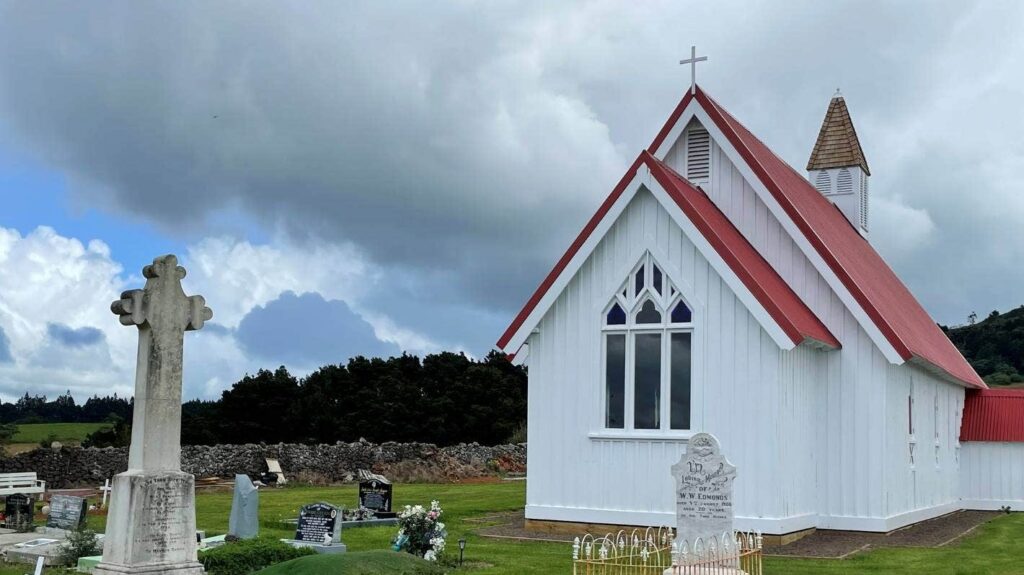
Readers might have noticed that “The Ōhaeawai Community Cultural Centre received a $1.7 million grant from the Provincial Growth Fund for the project.” Wouldn’t it be “nice” if the Provincial Growth Fund recognised the historic significance of this mass burial site and contributed towards a more appropriate monument, starting with a more dignified entrance and sealing the road access and car parking area?
The point is that in this modern era sixty years later, with all such regional infrastructural developments being controlled by more severe Resource Consent environmental legislation with more sensitive cultural recognition of ancient burial grounds, this entire Tongariro Hydro Power Project would never have achieved their resource consent. At the very least, any sacred historic burial ground would have to be bypassed by the tail race canal. Instead in 1967 it was more convenient and far more cost-effective for the body remains to have been excavated by MOW and shifted to a nearby site out of public view. The MOW should have been more sensitive than providing the row of wooden crosses on a private mountain. Perhaps Tuwharetoa should apply for a PGF grant to restore Peka Peka?
